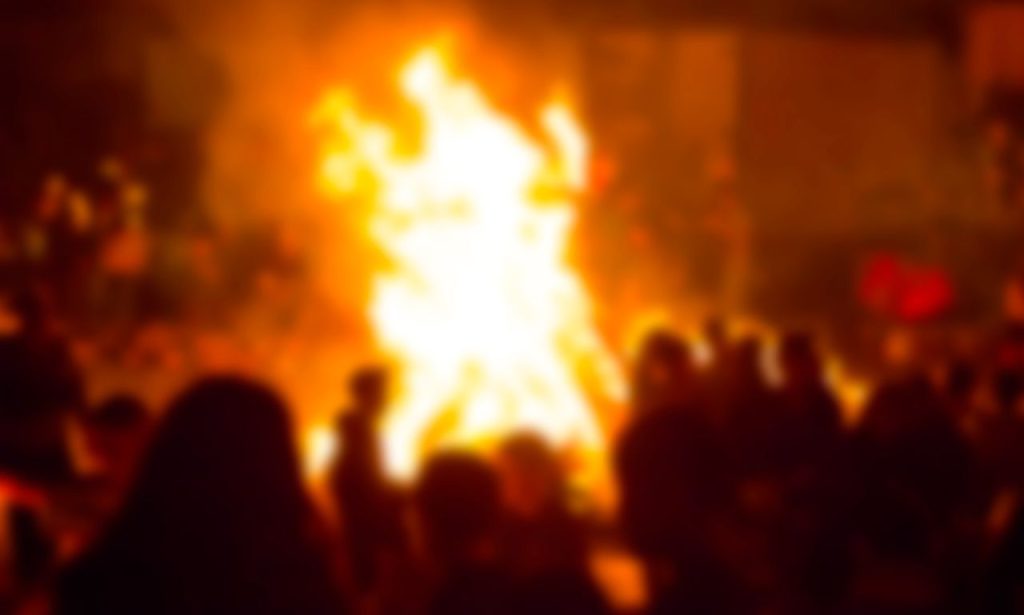Halloween, that time of year when the veil between worlds thins, and we revel in the deliciously spooky, the playfully macabre. But have you ever stopped, amidst the candy corn and costume chaos, to ponder: what does Halloween celebrate? The answer, dear reader, lies not in a single tradition, but in a tapestry woven from ancient Celtic rituals, Christian observances, and a healthy dose of cultural evolution. So, grab your metaphorical flashlight, and let’s delve into the heart of this hauntingly fascinating holiday.
The Origins of Halloween
To truly understand what Halloween celebrates, we must journey back in time, to the ancient Celtic festival of Samhain (pronounced “sow-in”). Imagine, if you will, the emerald hills of Ireland, shrouded in the mists of the 5th century BC. The Celts, a people deeply connected to the rhythms of nature, observed Samhain on the eve of November 1st, marking the end of the harvest season and the beginning of the dark half of the year.
The Celtic Festival of Samhain

For the Celts, Samhain wasn’t just about pumpkins and candy; it was a time imbued with profound spiritual significance. It was believed that on this night, the boundary between the worlds of the living and the dead blurred, allowing spirits to cross over. Imagine the flickering flames of bonfires illuminating the night, casting dancing shadows as villagers gathered to celebrate the harvest and honor their ancestors.
Here’s a glimpse into the key elements of Samhain:
- Honoring the Cycle of Life and Death: Samhain marked not just the end of the harvest but also the symbolic death of the year, a time for reflection and remembrance. The Celts believed that honoring the dead ensured their blessings for the coming year.
- Communing with the Spirit World: With the veil between worlds lifted, the Celts believed that spirits, both benevolent and mischievous, could easily traverse into the realm of the living. This led to rituals aimed at appeasing the spirits and seeking their guidance.
- Divination and Prophecy: The thinning of the veil also made Samhain a potent time for divination. Villagers would consult with druids (Celtic priests) for insights into the future, using rituals involving bonfires, stones, and other natural elements.
All Saints’ Day and All Souls’ Day
As Christianity spread throughout Europe, it encountered existing pagan traditions like Samhain. Rather than trying to eradicate these deeply rooted customs, the Church often chose to absorb and adapt them. In the 8th century AD, Pope Gregory IV moved the feast of All Saints’ Day, a day to honor all Christian saints, from May 13th to November 1st. This strategic placement aligned with the timing of Samhain, allowing the Church to overlay Christian meanings onto existing pagan practices.
All Souls’ Day, observed on November 2nd, followed a similar trajectory. This day was dedicated to praying for the souls of all departed Christians. The proximity of these Christian holidays to Samhain inevitably led to a blending of traditions.
Influence of Local Customs
As centuries passed, the celebration of what we now call Halloween continued to evolve, absorbing regional customs and beliefs. Here are a few examples of how local folklore and practices shaped the holiday:
- Costumes and Guising: In some parts of Europe, people would dress up in costumes, often as saints or biblical figures, on All Saints’ Day. This practice, known as “guising,” likely had roots in both pagan and Christian traditions.
- Soul Cakes and Trick-or-Treating: The tradition of “souling,” where children would go door-to-door singing songs or reciting prayers in exchange for “soul cakes” (small pastries), emerged in the Middle Ages. This practice, linked to All Souls’ Day, is considered a precursor to modern trick-or-treating.
- Bonfires and Superstitions: Bonfires, a central element of Samhain, continued to play a role in Halloween celebrations. However, they took on new meanings, often associated with warding off evil spirits or predicting the future.
Cultural Expressions of Halloween
From its ancient Celtic roots, Halloween has blossomed into a global phenomenon, celebrated in diverse ways across the world. Let’s explore some of the most iconic traditions associated with this hauntingly fun holiday:
Costumes and Trick-or-Treating
What would Halloween be without costumes and the sweet ritual of trick-or-treating? This beloved tradition allows us to step outside ourselves, to embrace the fantastical and the macabre, if only for a night.
- The Allure of Transformation: Costumes, whether spooky, silly, or inspired by pop culture, allow us to explore different identities and shed our everyday personas. For children, it’s a chance to inhabit their wildest imaginations, while adults can embrace a sense of playful escapism.
- The Evolution of Trick-or-Treating: While the modern practice of trick-or-treating has its roots in medieval souling traditions, it has evolved into a beloved ritual where children, dressed in their finest costumes, go door-to-door collecting candy. This tradition fosters a sense of community and allows children to engage in playful interaction with their neighbors.
Pumpkin Carving and Jack-o’-Lanterns
The iconic jack-o’-lantern, with its toothy grin and flickering candlelight, has become synonymous with Halloween. But this tradition has a surprisingly rich history, rooted in both practicality and folklore.
- From Turnips to Pumpkins: The practice of carving vegetables and placing candles inside to ward off evil spirits dates back centuries. In Ireland and Britain, turnips were the traditional choice, while pumpkins, native to North America, became the go-to canvas for jack-o’-lanterns in the United States.
- The Legend of “Stingy Jack”: One popular folktale links the jack-o’-lantern to a mischievous character named “Stingy Jack.” Legend has it that Jack tricked the Devil and was forbidden entry into both heaven and hell. He was condemned to wander the earth with only a burning coal inside a carved turnip to light his way.
Bonfires and Festivals

While bonfires are less common in modern Halloween celebrations, they harken back to the ancient Celtic tradition of Samhain, where fire played a central role in rituals and festivities.
- Symbolism of Fire: Fire, with its ability to both destroy and purify, has long held spiritual significance. In the context of Halloween, bonfires served multiple purposes: to ward off evil spirits, to honor the dead, and to provide a focal point for community gatherings.
- Modern Adaptations: While large bonfires are less common today due to safety regulations, the spirit of communal celebration lives on in Halloween festivals, parades, and events that bring communities together to celebrate the season.
Conclusion
So, what does Halloween celebrate? It celebrates the cycle of life and death, the blurring of boundaries, and the enduring power of storytelling and imagination. It’s a time to honor our ancestors, confront our fears, and embrace the magic of the unknown. As you don your costume, carve your pumpkin, or indulge in a spooky tale, remember that you’re participating in a tradition that spans centuries and connects you to a rich tapestry of human experience.
ALSO READ: What to Do in Cape Cod in the Fall
FAQs
A: The word “Halloween” is a shortened version of “All Hallows’ Eve,” which refers to the evening before All Saints’ Day (November 1st). This transition reflects the holiday’s evolution from its pagan roots to its integration with Christian observances.
A: Absolutely! While candy reigns supreme today, traditional Halloween foods often featured seasonal ingredients and symbolic meanings. Examples include:
Soul cakes: These small, spiced cakes were often given to “soulers” (children or the poor) who would go door-to-door praying for the dead on All Souls’ Day.
Barmbrack (Ireland): This fruitcake often contained hidden charms, with each object representing a different fortune for the person who found it.
Apples: Apples, associated with harvest and abundance, were often featured in Halloween games and traditions, like bobbing for apples.
A: The exact origins of the phrase are debated, but it likely evolved from a combination of traditions:
“Trick” likely stems from the mischievous nature of spirits and the playful threats of pranks if treats weren’t provided.
“Treat” connects to the ancient practice of giving offerings (food, drink) to appease spirits or ensure good fortune.
A: Black cats have a long and complex history in folklore, often linked to both good and bad luck. In the context of Halloween, their association with witches and the supernatural likely stems from medieval European beliefs. Black cats were sometimes seen as witches’ familiars or even witches in disguise, contributing to their spooky reputation.
A: While Halloween has its roots in Celtic and European traditions, its celebration has spread globally, often blending with local customs and beliefs. For example, in some Asian cultures, ancestral veneration and remembrance take center stage during this time of year, while other regions have developed their own unique interpretations of the holiday.




